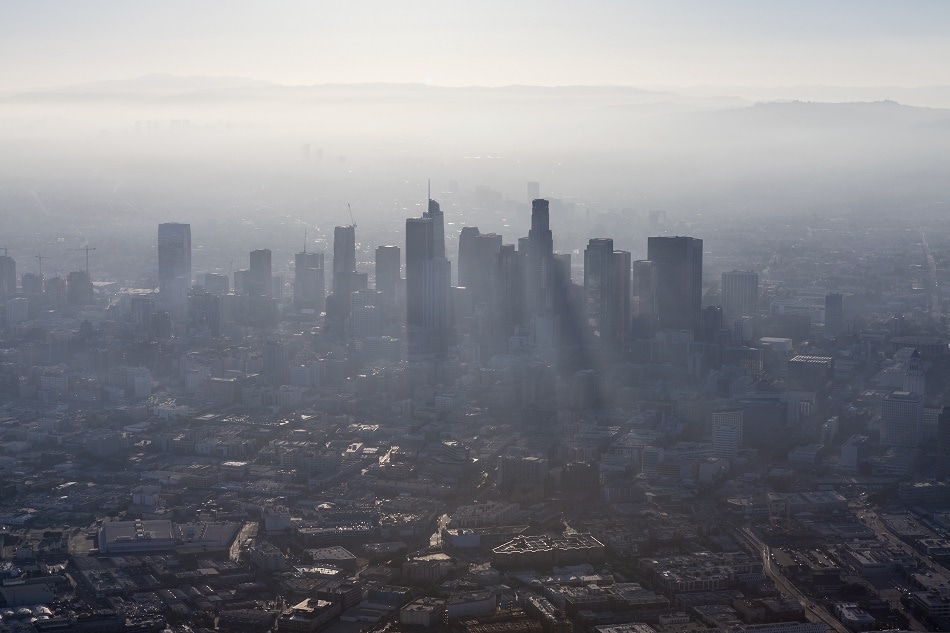
Image credits: trekandshoot/shutterstock.com
New data has revealed that US air quality has declined since 2016. In 2018 alone the deterioration of the quality of air and rise in pollution was linked to over 9,700 premature deaths across the country.
The study, conducted by researchers at Carnegie Mellon University, exposed a 5.5 percent increase of fine particle pollution since 2016, the year in which fine particle pollution had fallen by nearly 25 percent, a two-decade low. The paper, published by the National Bureau of Economic Research, explores how this increase may have occurred by evaluating recent economic activity, the escalating intensity of California wildfires, and any decreases in Clean Air Act enforcement actions.
We had been improving for a long time in this country. To see that reversal is very important.
Nicholas Muller, Co-author of the Paper and Associate Professor of Economics, Engineering and Public Policy, Carnegie Mellon University
The focus on fine-particle pollution (PM2.5) throughout the paper is due to the fact it can be inhaled and absorbed into the bloodstream which is of particular concern to public health experts and regulators. The effects of which are only recently being understood in line with the 1997 standard published by the EPA. The aim of the study, Muller hopes, is to stimulate and increase awareness among air quality regulators at both the local and national level.
Justification of the relative concern regarding PM2.5 and worsening air quality comes from analysis that states fine particles can impact the respiratory system, cause cancer and accumulate in the brain. What’s more is that any sudden decrease in air quality can place an extra burden on hospital as more people are admitted to the emergency room.
The causes for the recent spike of PM2.5 which has led to the degradation of the air’s quality may be due to those factors mentioned earlier such as economic growth as higher output of productivity usually means increases in the following; increased factory output; burning of fossil fuels; rises in emissions from additional transportation; and the ever-growing commercial air industry.
What’s more is the spate of wildfires in California in 2018 led to the declaration of a public emergency by Alex Azar, US secretary of health and human services. The wildfires have released large quantities of smoke and fine particles into the atmosphere which has had a huge impact on national air pollution levels, illustrating the severity of the 2018 events.
Wildfires are incredibly dangerous, but there's this other effect. Fine particulate pollution is harmful as well.
Nicholas Muller
While the researchers agree omitting the wildfires from the data lessens the increase, it does not eliminate it meaning that other factors are playing an equally significant role in the study. One such component is the aforementioned decrease in Clean Air Act enforcement actions which has continually fallen since the inauguration of President Trump and subsequent disbanding of an EPA air quality panel.
Evidently, questions surrounding why EPA enforcement actions have failed to rise along with pollution will now come to surface. “That’s a break in the broad pattern that we find interesting,” Muller said. An avenue Muller and study co-author, Karen Clay, intend on pursuing next.
Across the world air pollution is a major cause for concern as around 4 million people die prematurely as a result of exposure to outdoor air pollution, according to WHO statistics. Of the 9,700 recorded deaths across the US around 43 percent of those were in California which links to the wildfire statistics. What is clear is that the rise in fine particle air pollution has a damaging effect on human health worldwide.
Disclaimer: The views expressed here are those of the author expressed in their private capacity and do not necessarily represent the views of AZoM.com Limited T/A AZoNetwork the owner and operator of this website. This disclaimer forms part of the Terms and conditions of use of this website.